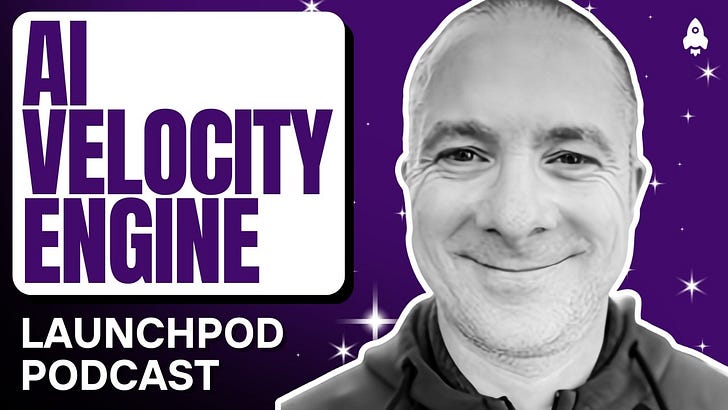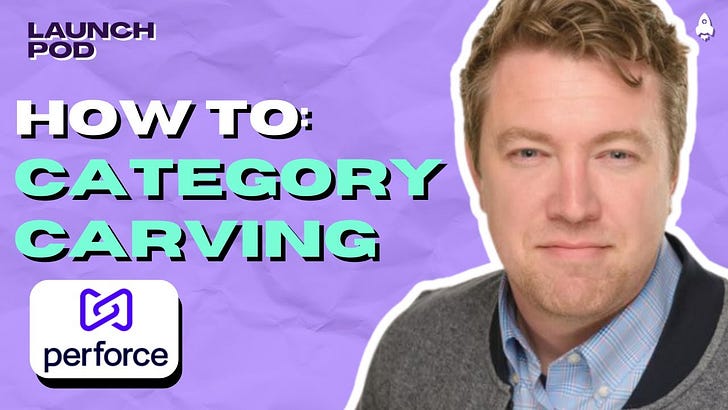“In this era of AI especially, any company that takes a long time to do simple features is not going to be around too long. That’s a mindset we’re trying to get into the minds of our PMs.”
Jeremy Pollock, VP of Product at WP Engine, joined us on LaunchPod this week to share how he’s pushing his product teams to move faster than ever, and even build for themselves.
In a world with AI speed isn’t just an advantage, it’s survival. Teams that move slowly will fall behind for good.
What does it look like when PMs don’t just use AI, but actually build and ship product as a result? And how do you get them to do it?
Jeremy spills the beans on how they’ve got teams to “eat their broccoli” at WP Engine and more.
Why speed is the new moat
“In this era of AI especially, any company that takes a long time to do simple features is not going to be around too long. That’s a mindset we’re trying to get into the minds of our PMs.
It just feels like the barrier to entry to get going has been dramatically lowered… leverage AI tools to get me going and engaged in the problem and work towards a solution much more quickly than before.”
Jeremy is pushing his teams to move fast by learning to build quickly and using AI to go from idea to prototype in hours.
“The contribution level that people can have is so much higher to prove the zero to one... to make the point that this is something we should work on.”
But the speed advantage isn’t just about prototyping. Jeremy also encourages using AI for every part of the product workflow: summarizing feedback, generating briefs, validating direction.
“If you’re not using AI to move faster and be more productive, someone else is. And they’re going to ship faster than you.”
How WP Engine is enabling product teams to use AI
Jeremy’s not just talking about AI, he’s building the scaffolding to support real adoption across the company.
Access to tools; not everyone can afford the advanced plans
Support the time needed to invest in learning
Provide examples for people to learn from
“I think the best way is to just build examples and then show them to people. And so that’s what I’ve been trying to do more and more.” He’ll say, “hey, I’m using AI…Part of this product brief is half Jeremy and half Claude. Not to show the finished artifact, but to show the steps I went through.”
But also, “people can actually spend the time and use these tools in different ways, whether creating product briefs, creating the stories that get fit into Jira, doing that query for product usage analysis…”
What this actually that looks like:
WP Engine provides access to Claude, ChatGPT, OpenAI APIs , Lovable, Bolt, Cursor, and more so teams can programmatically use them.
Leadership worked with security & legal teams for data handling agreements, and provided keys to teams to use them, so teams can move fast and confidently without red tape.
They provided a space for Internal collaboration; people can share best practices, learnings, and just cool projects
“We have a pretty active Slack channel internally for AI, and people just talk about the cool stuff they’re doing. It’s pretty inspiring.
You need those sparks of inspiration. So we set up sessions where people share what they tried, what worked, what didn’t.
We’re still very early on the cultural part of it, but I think people are generally bought into this idea of: this is something we’re going to have to get really good at.”
How big, aspirational product goals create momentum
Big product goals aren’t just about vision—they’re the fuel that gets teams through the hard stuff.
Jeremy described how the teams at WP Engine build momentum by aiming high. Ambitious targets help people push through the unglamorous work that needs to get done to hit them.
“If you don’t have that big goal, the ‘eating your vegetables’ kind of activities just feel like eating steamed broccoli, and that’s disgusting. But if you're shipping cool product, you're going to do the backend, database cleanup work or the other things that are not that fun, but that make the product capable of handling this really cool capability.”
Without that shared goal, the hard work can feel like a slog.
And teams can feel that difference. As Jeremy put it:
“We’re aggressively moving on solving the problem, but it still takes 6 months. Here’s how we’ve broken out the plan and here’s our progress. That's been working so successfully in getting everyone on board with these types of major investments that improve customer experience, but not necessarily in a shiny ball, visible type of way.”
Ambition gives teams purpose. That purpose keeps them shipping.










